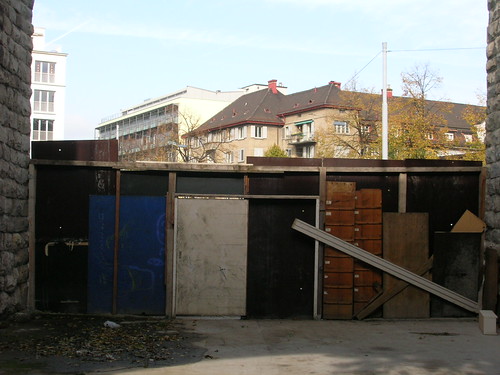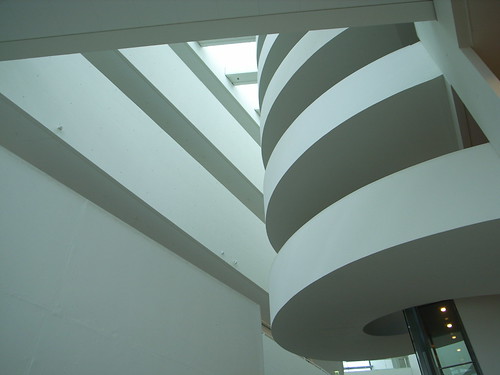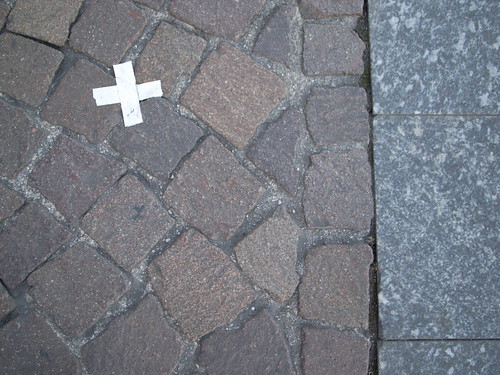This is the fourth blogpost of a serie that concerns my thoughts about the topic “Space, cognition, interaction” that I address in my dissertation . Step 4 is about the importance of territoriality (see step 1, step 2, and step 3).
When dealing with people and location, the fundamental use of space concerns human territoriality. It reflects the personalization of an area to communicate ownership. Territories as specific context support social roles among a community (Prohansky et al., 1970). Therefore, the meaning of a particular place is endowed through its exclusive use. Each place thus corresponds to a set of allowed behaviors. There is a strong inter-relation between group identity (feeling that we belong to a larger human group) and spatial identity (based on our habits, experience and knowledge about the environment). Jeffrey and Mark (1998) found that territoriality was an important feature in the context of virtual worlds. For example, building one’s house in Active World is a way “to provide a territorial marker and provide a feeling of ownership for the owner” (Jeffrey and Mark, 1998, p. 30). Furthermore, it seems that people build their house in existing neighborhoods rather than in uninhabited places.
Additionally, territoriality could be defined as a way to achieve and exert control over a segment of space (Prohansky et al., 1970) and then to maintain and achieve a desired level of privacy. According to Minami and Tanaka (1995, p45), "group space is a collectively inhabited and socioculturally controlled physical setting". The activity then becomes a group activity in terms of interactions with and within space as well as a control to the degree of space maintaining.
Another concern linked to the topic of human territoriality deals with the visibility and the permeability of its boundaries. There are not only fixed and impermeable community perimeters (closed by walls for instance), but also invisible temporary group territories. Small conversing groups in public places are an interesting example: fixed barriers are replaced by what Lyman and Scott (1967) call “social membranes”. Knowles (1973) studied which factors affect the permeability of those invisible boundaries. Using spatial invasions, he showed that people tend not to invade other group territories even if they are in a public space or path (Knowles, 1973). Furthermore, Cheyne and Efran (1972) found that group spaces feel invaded if the boundaries become fuzzy or if the distance among group members becomes large. If this distance is above four feet, the boundary becomes ineffective and passers by begin to walk through the group. Space thus models group interaction. Agreements on spatial territory (Lyman and Scott, 1967) or the closeness of members (Cheyne and Efran, 1972) are examples of rules that govern group interaction.
References:
Cheyne, J. A., & Efran, M.G. (1972): The effect of spatial and interpersonal variables on the invasion of group controlled territories. Sociometry, 35, 477-487.
Jeffrey, P., & Mark, G. (1998). Constructing Social Spaces in Virtual Environments: A Study of Navigation and Interaction. In K. Höök, A. Munro, D. Benyon, (Eds.) Personalized and Social Navigation in Information Space, March 16-17, 1998, Stockholm (SICS Technical Report T98:02) 1998) , Stockholm: Swedish Institute of Computer Science (SICS), pp. 24-38.
Knowles, E. S. (1973). Boundaries around group interaction: The effect of group size and member status on boundary permeability. Journal of Personality and Social Psychology, 26, 327-331.
Lyman, S. & Scott, M.B. (1967): Territoriality. A Neglected Sociological Dimension. Social problems, 15, pp. 236-249.
Prohansky, H.M., Ittelson, W.H. & Rivlin, L.G. (1970). Freedom of choice in a physical setting. In H.M. Prohansky, W.H. Ittelson, & L.G. Rivlin, (Eds.) Environmental psychology: People and their physical settings (pp.177-181). New York: Holt, Rinehart & Winston.
Minami, H., & Tanaka. K. (1995). Social and Environmental Psychology: Transaction Between Physical Space and Group-Dynamic Processes. Environment and Behavior, 27(1), 43-55.







 (Image courtesy Jun Yu, David Gerber)
(Image courtesy Jun Yu, David Gerber)

 (Picture K. Kamm/U. Wis.-Milwaukee)
(Picture K. Kamm/U. Wis.-Milwaukee)